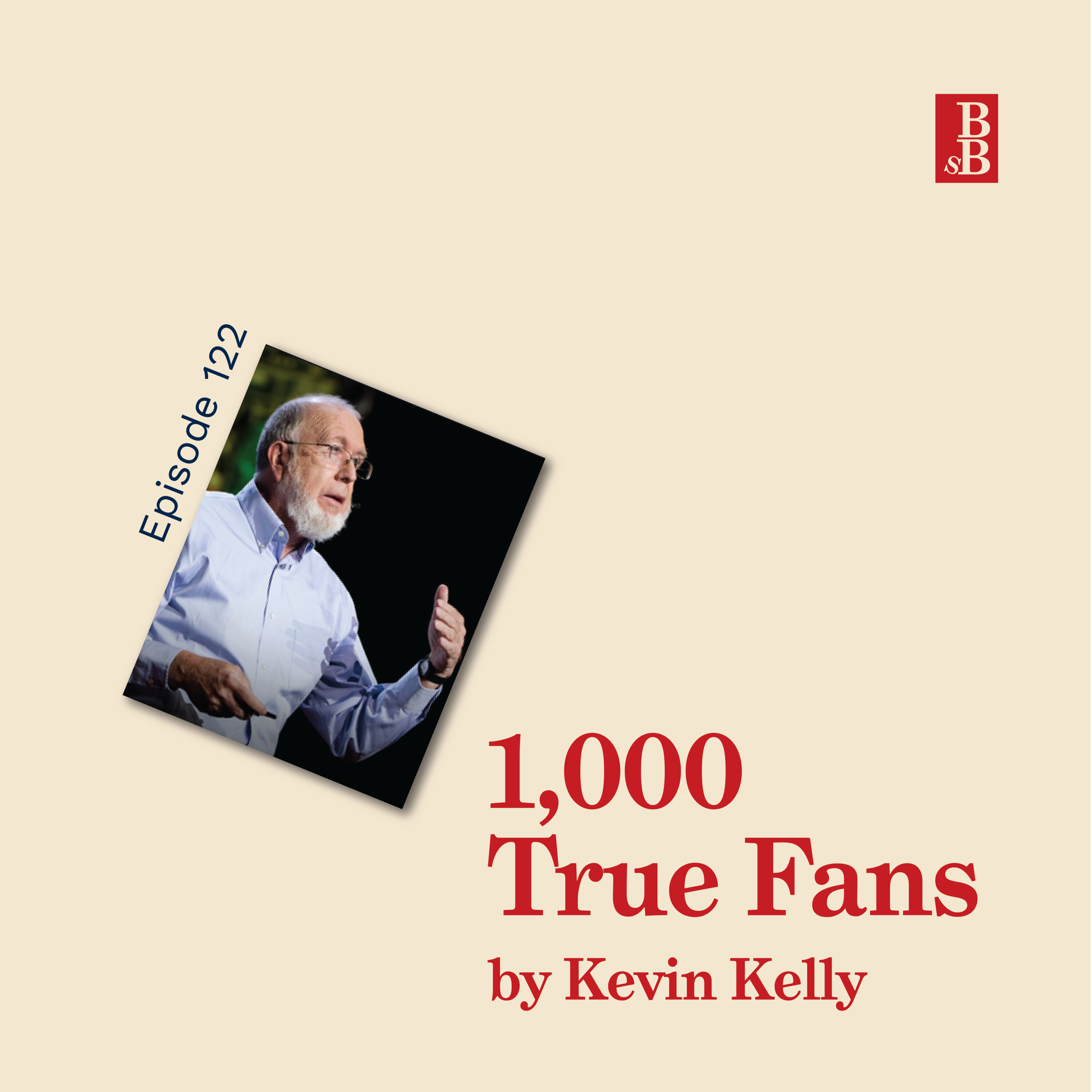1,000 True Fans by Kevin Kelly - why you shouldn't focus on the millions

I\u2019m talking about something a little bit different this week, it\u2019s not a book, but an essay. And one that is talked about and referenced regularly on podcasts and in other books.\u2060
\u2060
I have quite strong feelings about the fact that more books should be essays. Some of the books I\u2019ve enjoyed the least, would have been very fine essays. But no, they had to go and stretch it beyond its capacity over a mediocre 250 pages.\u2060
\u2060
Luckily, Kevin Kelly didn\u2019t do this. He either has more sense, or doesn\u2019t need the money (or both).\u2060
You can read the essay right here.
\nAbout the\xa0Author
\nKevin Kelly is Senior Maverick at Wired magazine. He co-founded Wired in 1993, and served as its Executive Editor for its first 7 years. His most recent book is The Inevitable, which is a New York Times and Wall Street Journal bestseller. His other books include the best-selling New Rules for the New Economy, the classic Out of Control, and his summary theory of technology in What Technology Wants. From 1984\u20131990 Kelly was publisher and editor of the Whole Earth Catalogs. He co-founded the Hackers\u2019 Conference, and was involved with the launch of the WELL, a pioneering online service started in 1985. He also founded the popular Cool Tools website in 2003.
\nSource: https://kk.org/biography
\nAlso check out Kevin\u2019s blog: https://kk.org/thetechnium/
\nBig idea #1\u200a\u2014\u200aYou don\u2019t need\xa0millions
\nThis is the fundamental idea that you don\u2019t need millions of fans or dollars to do good work and make a living. You just need 1,000 true fans who will pay you say $100 a year for your work, which gives you a very good living of $100,000 per annum.
\nThese are your super fans. They will follow you, buy your books. Maybe they even buy the audio book and the hard back. They\u2019ll come to all your workshops, and they\u2019ll drive a hundred miles to see you perform.
\nIt\u2019s important to note here that it\u2019s easier to reach or sell to your existing fans, and give them something new, than to find new fans. Of course, you will also have \u2018other\u2019 fans who may pay you for your work, but probably less consistently.
\nThe numbers aren\u2019t absolute, there\u2019s plenty of examples in the essay where the dollars maybe go up, if you can make more than a hundred dollars profit per fan, and therefore the number of fans go down and vice versa. And if you know that you have an expensive lifestyle and you need $500,000 a year to live on, then you would of course need to redo the maths and work out the numbers based on what you need and what you charge for your work.
\nBig idea #2\u200a\u2014\u200aGo\xa0direct
\nThis essay was originally written in 2008 (back in the dark ages) before lots of the current social media, websites and tools were available, Kevin has updated the essay relatively recently, which is most relevant to going direct to your fans.
\nKevin says you need to hold the relationship directly with your fans, cut out the middle person of the old models of publishing or stores or labels etc. This is even easier today, and we\u2019re seeing this in everything from music, or book distribution through to beds. Many of the old model intermediaries didn\u2019t have the richness of audience data and relationships that most creators do today.
\nYou\u2019ve also got new funding models, for example, Kickstarter. Interestingly, the average Kickstarter campaign gets 241 backers in order to be fully funded, which is a lot less than 1,000 true fans. We\u2019ve also got things like Patreon and even more recently, NFTs (non fungible tokens) which are making creators and artists serious money through the way of distributing the ownership of art.
\nThe internet has also meant that more obscure needs can be met for both the creator and the consumer, and matched in a way that wouldn\u2019t have been possible even just 20 years ago.
\nBig idea #3\u200a\u2014\u200aThe magic in the long\xa0tail
\nYou may have heard of the long tale in the context of sales numbers for a company, or from an aggregator like Amazon. You\u2019ve got the head, which if you imagined the bar graph of sales, will probably be a small number of big, chunky lines that go up the left hand side. And then the tail, which is everything else. It comes back to the 80/20 rule; 20% of the products might create 80% of the sales.
\nCompanies often talk about \u2018chopping off the tail\u2019 because maybe the return on the investment isn\u2019t quite there. You might as well put more effort into the top selling products or services. However, this tail is where the magic is for creators, as the area of the tale is often the same or greater than the area of the head, it\u2019s just more distributed.
\nThis means that there is more to go around, and you can spread those sales across a lot more people. This is where those more obscure needs and tastes will create tiny, profitable, niches for you to find your 1,000 true fans.
\nIt\u2019s worth mentioning that this is not binary. You don\u2019t \u2018do the 1,000 true fan thing\u2019 or not. You can mix and match; maybe 50% of your work is funded by the 1,000 true fans with a direct to consumer relationship. But you might also write a book through traditional publisher.
\nAnd Kevin Kelly shares his own examples of this, where he has self published some work, but he\u2019s also done some books through traditional publishers. He\u2019s crowdfunded projects, but he\u2019s also had projects sponsored. It\u2019s a case of choosing the best approach for your project and fan base.
\n_________________________
\n\xa0
Support my book habit: https://www.buymeacoffee.com/stephsbookshelf
See omnystudio.com/listener for privacy information.